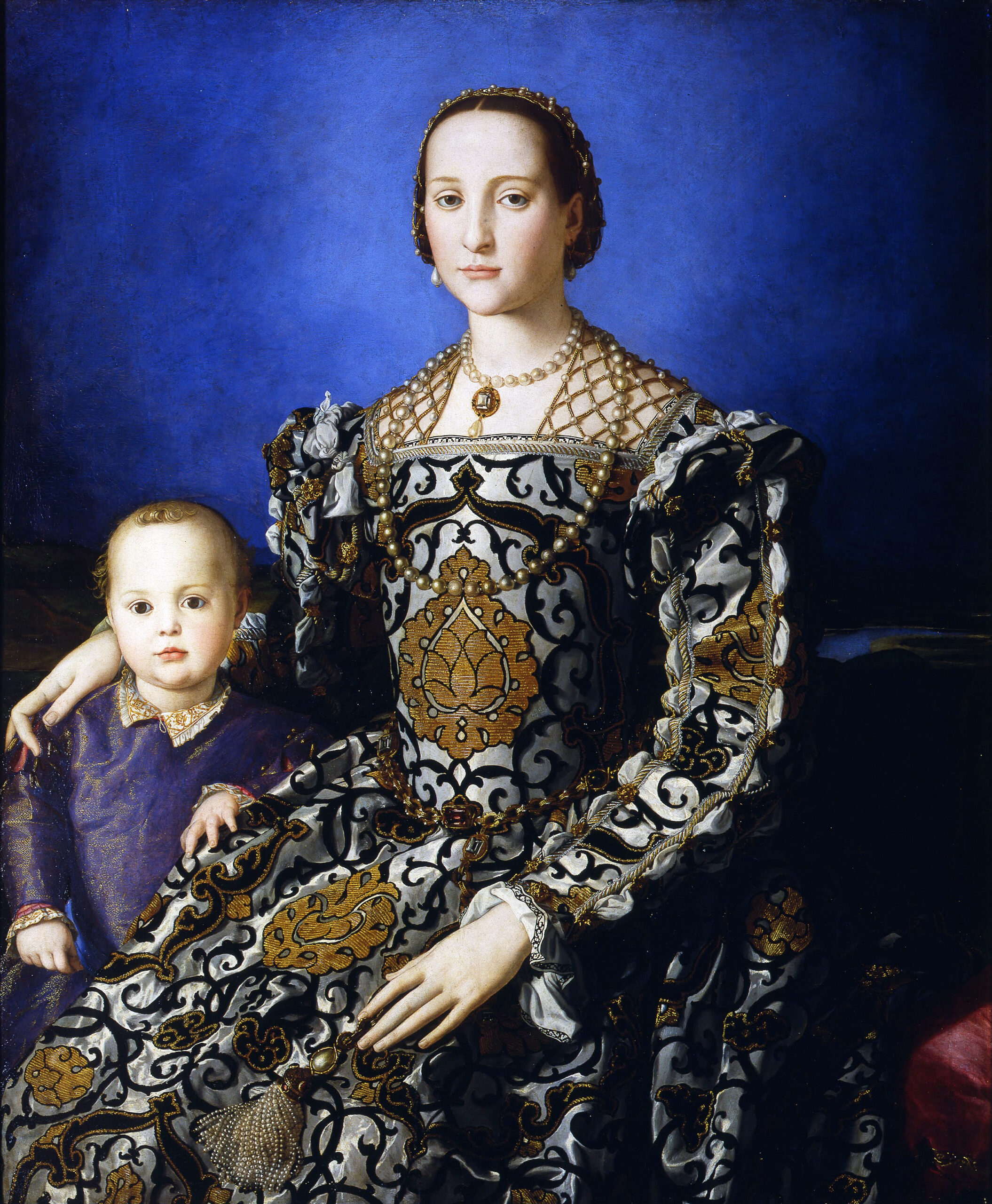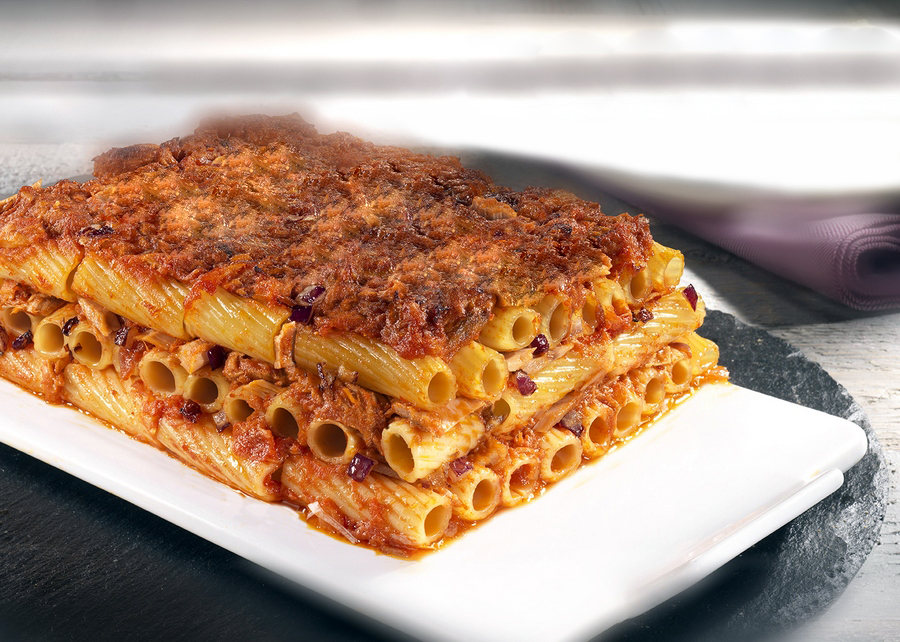By C. De Melo, contributing writer
If one does a Google image search on the Internet for “Eleonora di Toledo,” you will find that Bronzino’s famous double portrait depicting the duchess and her young son Giovanni, inevitably pops up as a result. This masterpiece was completed in August 1545, shortly after the duchess had given birth to her fifth child. Eleonora was the wife of the Duke of Florence, Cosimo I, who in 1569 became the first Grand Duke of Tuscany.
At first glance, this famous painting appears to be nothing more than an aesthetically pleasing work of art. Upon closer inspection, however, one can ascertain that it is actually a form of propaganda, an advertisement. The piece was specifically designed to support the economic agenda of 16th century Florence while simultaneously validating Cosimo I’s rule.
The iconic cream and black gown of brocaded velvet was comprised of gold weft loops. This laborious technique, known as calledriccio sopra riccio (loop over loop), produces a luxuriant texture. In celebration of the revival of the silk industry in Florence, Bronzino replicated the intricacies of this fabric with realistic precision.
Eleonora’s expensive gown, precious jewels and the heavy use of gold is akin to today’s political and corporate power-dressing. She was the daughter of the Viceroy of Naples, the noble Don Pedro di Alvarez di Toledo, who hailed from one of the wealthiest and most powerful families in Spain.
The black velvet arabesques flowing throughout the fabric is reminiscent of the black velvet gowns favored by the Spanish royal court. By dressing alla Spagnola, the duchess asserts her aristocratic bloodline, immense wealth and important political connections.
Maria di Salviatti, Cosimo I’s mother, purchased two hundred fine quality Venetian pearls with the intention of impressing the young Spanish noblewoman. Eleonora received this lavish gift prior to marrying Cosimo I and they are most likely the same pearls featured in this portrait.
The gold motifs displayed throughout the fabric alludes to Eleonora’s fecundity. Historians refer to the shape as a pomegranate, a well-known symbol of fertility. Noblewomen were expected to provide as many heirs as possible for their husbands – and preferably more than one male. Should calamity befall upon the heir, the next male in line could inherit and continue the family lineage.
From the time Eleonora married Cosimo in 1539, until her death in 1562, she bore an impressive total of eleven children:
- Maria – April 3, 1540 – November 19, 1557
- Francesco – March 25, 1541 – October 19, 1587
- Isabella – August 31, 1542 – 16 July 16,1576
- Giovanni – September 28, 1543 – November 1562
- Lucrezia – June 7, 1545 – April 21, 1561
- Pietro – August 10, 1546 – June 10, 1547 – died in infancy
- Garzia – July 5, 1547 – December 12, 1562
- Antonio – July 1, 1548 – July 1548 – died in infancy
- Ferdinando – July 30, 1549 – February 17, 1609
- Anna – March 19, 1553 – August 6, 1553 – died in infancy
- Pietro – June 3, 1554 – April 25, 1604
Lastly, Bronzino depicted Eleonora and Giovanni with radiant skin and robust health. This physical idealization, combined with their formal pose and serene expressions, reminds us of the many Madonna and Christ child paintings throughout Florence. Eleonora was a faithful Catholic, frequently lauded for her chaste comportment and piety.
This masterpiece can be viewed at the Galleria degli Uffizi in Florence, Italy.





